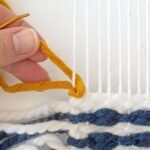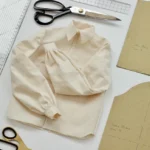Creating custom clothing designs allows you to craft unique garments that perfectly match your style and preferences. Whether you’re designing a one-of-a-kind outfit or starting a small clothing line, the process of custom clothing design involves several key steps. Here’s a guide to help you bring your custom clothing designs to life.
Understand Your Vision
Before diving into design, clarify your vision. Consider the purpose of your garment, the style you want to achieve, and the target audience if applicable. Create a mood board with images, colors, and fabrics that inspire you. This visual guide will help you stay focused and ensure that your designs align with your original concept.
Sketch Your Designs
Start by sketching your designs to visualize the garment. Draw detailed sketches that include various views of the clothing item, such as front, back, and side. Pay attention to details like seam placements, closures, and embellishments. If you’re not confident in your drawing skills, consider using design software or working with a professional illustrator.
Choose the Right Fabrics
Selecting the appropriate fabrics is crucial for achieving the desired look and feel of your custom clothing. Consider the texture, drape, and durability of each fabric. Choose materials that suit the style and purpose of your garment, such as lightweight cotton for casual wear or luxurious silk for formal attire. It’s also important to consider fabric care and maintenance.
Create a Pattern
Once you have your design and fabric, create a pattern for your garment. Patterns are templates that guide the cutting and sewing of fabric pieces. You can draft your own pattern based on your sketches or use a pre-made pattern that you modify to fit your design. For complex designs, consider working with a pattern maker to ensure accuracy and fit.

Sew a Prototype
Before finalizing your design, sew a prototype or muslin of your garment. This test version allows you to assess the fit, construction, and overall appearance. Make adjustments to the pattern or design as needed based on the prototype. This step helps you identify any issues and ensures that your final garment meets your expectations.
Add Details and Finishing Touches
Once your prototype is complete and refined, move on to adding details and finishing touches. This includes elements like buttons, zippers, trims, and decorative stitching. Pay attention to the quality of these components to ensure they complement your design and enhance the overall look of the garment.
Fit and Adjustments
Fit is crucial for custom clothing design. Try on your garment to assess how it fits and make any necessary adjustments. Ensure that the garment is comfortable and flattering. Make adjustments to the fit, length, or proportions as needed. For bespoke designs, multiple fittings may be required to achieve the perfect fit.
Consider Production Methods
If you plan to produce multiple garments, consider your production methods. Options include sewing by hand, using a home sewing machine, or partnering with a professional manufacturer. Each method has its advantages and implications for cost, quality, and scalability. Choose the method that best suits your needs and budget.
Promote Your Designs
If you’re creating custom clothing as part of a business, effective promotion is key to success. Build a portfolio showcasing your designs and create a website or social media presence to reach potential customers. Network with industry professionals and attend fashion events to gain visibility and connect with your target audience.
Artistic Portfolio and Online Entertainment
JennieMoncur.com displays the creative portfolio of Jennie Moncur, showcasing her artistic talents. For those interested in exploring different online avenues, visit wolfwinner.fun. Discover a new world of online fun.
Finding Online Fun After Creative Pursuits
Jennie Moncur’s website showcases creative work and artistic expression, a world of imagination. After engaging in such enriching endeavors, some individuals enjoy unwinding with different forms of online entertainment. For those seeking exciting and interactive digital experiences, exploring platforms like crazy vegas online casinos can offer a stimulating diversion. Remember to participate in online activities responsibly and within your comfort levels after your creative sessions.
Conclusion
Creating custom clothing designs is a rewarding process that allows you to express your creativity and produce garments tailored to your vision. By understanding your design concept, choosing the right fabrics, and paying attention to details, you can bring your unique clothing ideas to life. Whether for personal use or as part of a business, custom clothing design offers endless possibilities for innovation and style.










